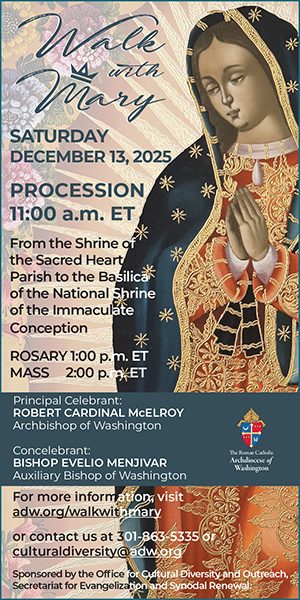The enormous popularity of The Bible in a Year podcast and Word on Fire Ministries’ Liturgy of the Hours (LOTH) series should dispel myths about the modern Catholic laity: truthfully, they want to read the Bible, and they want to pray the divine office. Thanks to Catholic Truth Society’s “Divine Worship: Daily Office” (Commonwealth edition), Catholics have a new model for how to do both in just one complete book.
The CTS’ “Divine Worship: Daily Office” takes its place alongside official approved variations of the Church’s public prayer known as the divine office. Other than the Mass itself, there is no greater prayer of the Church – and any lay person can lead these liturgical prayers in the absence of clergy.
The Second Vatican Council taught, “the divine office is devised so that the whole course of the day and night is made holy by the praises of God. … It is the very prayer which Christ Himself, together with His body, addresses to the Father” (“Sacrosanctum Concilium,” No. 84).
The same council envisioned the divine office being prayed by the faithful in parishes and cathedrals, and exhorted the laity to take it up. St. Paul VI called the divine office the “high point” of family prayer (“Marialis Cultus,” No. 54)
The post-Vatican II reform of the divine office, however, remained principally geared toward monastics, without much consideration for the needs of the other 99 percent of the Church.
The “Divine Worship: Daily Office” manages to successfully deliver the council’s vision by making use of legislation calling for Church authorities to revise the liturgical books with “legitimate variations and adaptations to different groups, regions, and peoples.”
The Catholic Truth Society’s variation was created for Catholics in the Ordinariates of Our Lady of Walsingham (based in the United Kingdom) and Our Lady of the Southern Cross (based in Australia), whose Anglican liturgical patrimony Pope Benedict XVI called a “treasure to be shared” and integrated into the Church in 2009 (“Anglicanorum Coetibus” §5:III).
Unless they are clergy or religious obligated to pray according to a particular form, any Catholic can pray the divine office using this volume.
Scripture-Soaked Offices
“Divine Worship: Daily Office” has robust forms of Morning Prayer and Evening Prayer, which may begin with an optional penitential rite and involve praying the psalms, biblical canticles and reading a chapter each of the Old and New Testaments. On average, praying either office takes 18-20 minutes.
“Ignorance of Scripture is ignorance of Christ,” St. Jerome once said, and here “Divine Worship: Daily Office” really shines. Prayed daily, this book covers pretty much the Old Testament once, and the New Testament twice, over a year. The included lectionary readings use the Revised Standard Version, 2nd Catholic Edition.
“Divine Worship: Daily Office” also contains a 30-day psalter based on a poetic translation by Miles Coverdale into traditional English. Psalms are divided daily between Morning and Evening Prayer, and correspond to each month’s calendar day. For months with 31 days, one repeats the psalms from Day 30. Thus, the psalms are prayed, not in isolation, but in the context of daily progression – like a pilgrimage.
Because users daily read four chapters of Scripture during Morning and Evening Prayer, there is no separate canonical hour for the Office of Readings. The book’s rubrics specify that its Morning Prayer is equivalent to Lauds and the Office of Readings in the LOTH; nevertheless it specifies where those readings can be used optionally at Morning and Evening Prayer.
Each of the Daytime Prayer offices take about 7-8 minutes, whereas Compline takes about 10 minutes. Compline concludes with Anthems of the Blessed Virgin Mary, and “Divine Worship: Daily Office” provides both Latin and poetic English versions.
“Divine Worship: Daily Office” also includes a beautiful Office of the Dead. The psalms and readings selected really do give voice to the desolation of death we experience with the passing of loved ones, and remind us of our hope in Jesus Christ and the consolation of his resurrection.
An Invitation to Prayer
In my view, “Divine Worship: Daily Office” makes the divine office a more straightforward, streamlined experience of prayer – one that is far easier for beginners to take up than the LOTH – while being a beautiful, spiritually enriching experience.
The book has six ribbons, which, once placed, are easily advanced day-by-day through the book. The Ordinariate of Our Lady of Walsingham has also produced some well done tutorial videos to guide beginners.
There is a great deal of spiritual wealth packed into just over 2,030 gold-edged pages. In addition to the Daily Offices, included are preparation and thanksgiving prayers for Mass, a penitential rite based on the Seven Penitential Psalms, an Itinerary (travel office), and Benediction of the Blessed Sacrament.
The Catholic Truth Society’s “Divine Worship: Daily Office” is a masterful achievement – a beautiful invitation to prayer that should certainly inspire bishops with a model for how to respond to requests to adapt the divine office for the Church – a possibility the Second Vatican Council envisioned (SC, No. 38) – for the needs of active clergy and laity or to produce office books reflecting beautiful spiritual and cultural patrimonies, such as African-American and Native American Catholics.
“Divine Worship: Daily Office” can be ordered from CTS Books.
Peter Jesserer Smith is the national news and features editor for OSV News.







